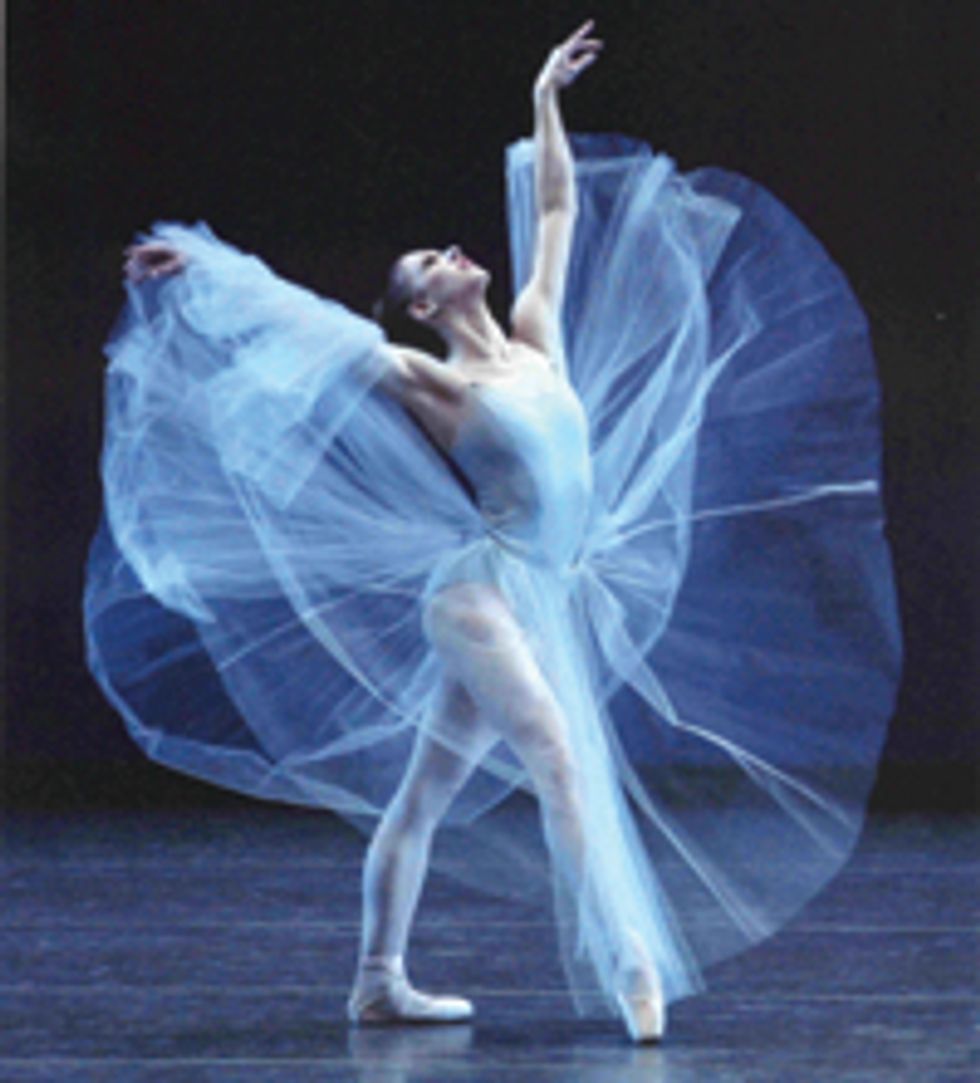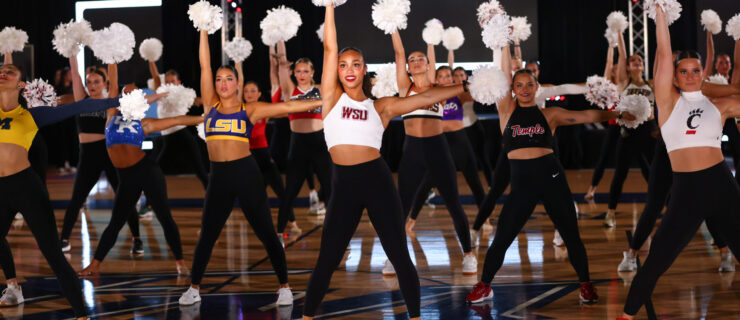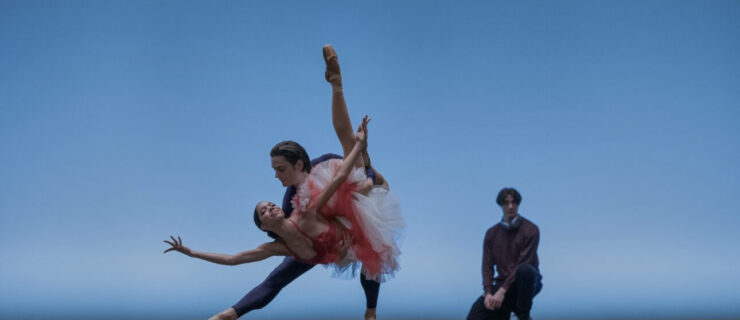How to Dance in a Tutu
Shortly after joining San Francisco Ballet at 16, I wore my first real tutu: a gorgeous white number for George Balanchine’s Symphony in C. I’d never felt more glamorous, or more like my childhood vision of a ballerina.
But my excitement faded as soon as I tried to move. The bodice felt like a corset and hampered my arabesque. I kept crowding the girl next to me because the skirt was so wide. I couldn’t see my feet to tell if I was standing on the quarter mark or six inches off my spot. I looked like a ballet dancer, but how was I supposed to dance?
I soon realized that feeling comfortable in a tutu takes a little bit of planning, some common sense and a lot of practice. Read on to find out how professionals deal with the most common tutu troubles.
Problem: I put on a tutu and can’t see my lower half.
Solution: Your lower body shouldn’t be out of sight, out of mind. “It’s easy to forget about engaging your turnout muscles when you can’t see your legs,” says Anita Paciotti, ballet master at San Francisco Ballet. “You should rehearse both with the tutu and without, focusing on connecting through your core.” If your spacing is off because you can’t see the floor tapes, use eye-level visuals instead, like exit signs, wings and lighting booms.
Remember that even though you can’t see your legs, everyone else can: A platter tutu exposes everything. “It’s unforgiving,” confesses New York City Ballet principal Jennie Somogyi. “Everything has to be perfect and precise.” Think about the way you’re presenting your legs and feet—they’ll be getting a lot of audience attention.
Tip: Show off your back and neck with beautiful épaulement.
Problem: The tutu bodice is too tight, and I feel like I can’t move my back freely.
Solution: If possible, ask the seamstress to add another row of hooks on the back of the bodice to allow for more breathing room. You can also add stretch panels, pieces of elasticized fabric that extend from armpit to waist on both sides of the bodice. Carla Körbes, principal with Pacific Northwest Ballet, loves this alternative because it gives her a fitted tutu that still has lots of mobility. “It’s especially great for ballets where you really have to get your legs up,” she says.
But sometimes you can’t make alterations: You might have to share a costume with a dancer who has a totally different build (or jump into a role without ever having a fitting), or you might not have access to a professional seamstress. In that case, Boston Ballet principal Larissa Ponomarenko recommends a “show must go on” attitude. “The tutu may be too tight or too big,” she says, “but you have to overcome that! Just go out there and dance and try to forget about it.” A tightly corseted bodice might even work to your advantage, reminding you to pull up through your spine and engage your core muscles.
Tip: Imagine the tutu as a very, very short evening gown. Feel elegant!
Problem: The tutu is getting in the way of my port de bras.
Solution: Redesign your port de bras slightly. For example, your arms in fifth en bas can’t be quite as low as they would be without a tutu. Paciotti suggests going through all the steps of a variation with just the upper body to see what changes you need to make. But don’t let your arms float up high because you’re afraid of making contact with the skirt. Instead, think of how your port de bras can complement the line of your tutu. “It’s not only your arms and legs making a shape,” she explains. “The tutu becomes part of that shape as well.”
Ponomarenko tends to move her arms mostly through first and second positions when she’s wearing a platter tutu, trying to match her port de bras to the 90-degree angle of the skirt. “In ballet,” she says, “a lot of inspiration comes from the beautiful lines that we make with our body. The costume has to be a part of it.”
Problem: Because my partner can’t see my feet, he can’t keep me on my balance, and the skirt keeps getting in his way. Our pirouettes are off!
Solution: First, take a close look at how the costume fits. “The tutu should sit just at the hip bones, rather than at the waist,” Körbes says. “That way your partner has more room to place his hands”—which will in turn give him more control over your balance.
Once the tutu fits correctly, do some extra rehearsing in the costume so that both you and your partner can adjust to the size and shape of the skirt, especially because your legs aren’t visible to him. Somogyi tries to rehearse in a tutu for at least a week before she has to perform. “That gives my partner a chance to get used to where my balance is by feel, rather than by watching the placement of my legs,” she explains. If the tutu is heavy, she adds extra force for turns to counter the additional weight.
Tip: Rehearse in a practice tutu with no safety pins or ties. Your partner could hurt his fingers! And be sure the size and shape of the skirt is similar to the one you’ll be wearing onstage.
Problem: When I wear a romantic tutu, the tulle gets bunched up and tangled in my legs.
Solution: “Do extra port de bras!” Somogyi suggests. “I’m always using my arms to untangle a long skirt—I make a swooping arm motion to get it out of the way. If it’s a dramatic role, you can use it for effect.”
Körbes does this too. In Balanchine’s Serenade, she brushes the top of her hand against the tutu “to create a flowing momentum,” she says. “But it takes practice to make it look natural and spontaneous.”
Your partner might also have problems with the long skirt, particularly when he’s trying to grip your leg for a lift. To prevent this from happening, Somogyi will sometimes put rosin on her tights where her partner’s hands need to be. You can also attach a thread to the inside layer of the skirt, extending from the front to the back (between your legs), to keep the tulle from flying up beyond your shoulders. “The thread allows the skirt to lift up, creating that ethereal look,” Ponomarenko says. “But it doesn’t end up on your head.”
Nothing is worse than a tutu that makes you feel klutzy or stiff. But if you learn to work with the costume instead of fighting against it, you’ll be able to focus on the thing that matters most: dancing.
If you’re not in a company with a large costume department, you may have to clean and store your own tutu.
Click here for tutu care tips from Wendy Levin, wardrobe supervisor at Pennsylvania Ballet.
Julie Diana is a principal dancer with Pennsylvania Ballet, has a BA in English from the University of Pennsylvania and has written for various dance publications.




